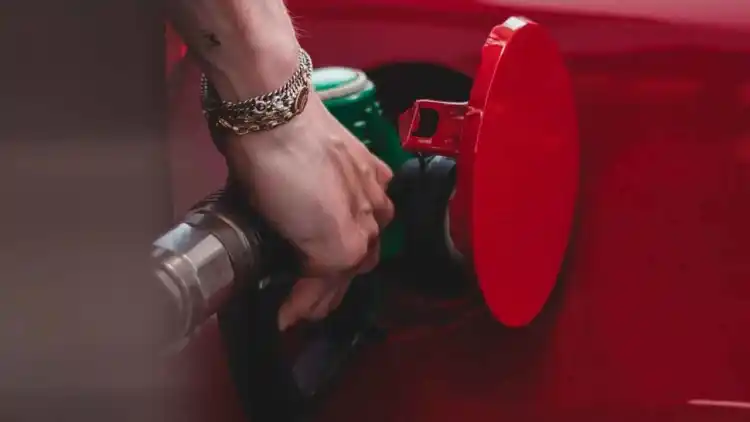- How Does Water Get into the Fuel Tank? Trust Only Pure Fuel
- What Does Water Do to Your Engine? Step-by-Step Damage and Warning Signals
- Signs of Water in Gasoline or Diesel—Don’t Ignore These Clues
- Thorough DIY Diagnosis for Water in the Tank
- Golden Rules for Removing Water—Minimize Damage, Maximize Precision
- Water Damage vs. Other Fuel Contaminants
- Proactive Protection: Top Tips for Fuel Purity
- “The Journey Taught by Water”
In the automotive world, clean, high-quality fuel is at the heart of performance and lasting reliability. But as drivers face unpredictable pump conditions and swinging weather—from summer heat to winter’s chill—the silent threat of water in your fuel tank too often goes unnoticed. Underestimated by many, this hidden risk can unleash a cascade of problems ranging from stalling and sluggishness to costly mechanical failures. This expanded guide delivers all you need to know on why and how water invades your gasoline or diesel, its broad impact on your fuel system, how to spot the warning signs early, and why rapid response is the cheapest insurance you have.

How Does Water Get into the Fuel Tank? Trust Only Pure Fuel
Day-night temperature swings, especially in humid or cold areas, create condensation inside the tank—those droplets become the start of engine trouble.
Filling up at pumps that have suffered rainfall leaks or poorly-maintained underground tanks that weren’t properly serviced is a leading cause.
A faulty or worn gas cap allows outside water or humidity to intrude, sometimes through leaky filler pipes and seals.
Refueling during rain, or washing the car with the fuel door open, can let water sneak in undetected.
Sometimes, the contamination starts upstream at the refinery or during fuel transport and storage.
What Does Water Do to Your Engine? Step-by-Step Damage and Warning Signals
Water can’t combust with gasoline or diesel, which leads to rough idle, misfires, hard starts, and an engine that feels weak or slow.
It corrodes and rusts the fuel pump and precision fuel injectors, disrupts sensors and valves, and degrades fuel quality over time.
Water builds up at the bottom of the tank, where it’s drawn first into the fuel pump after overnight parking—meaning morning starts are more at risk.
Extended exposure blocks key fuel filters, starving the engine of clean fuel and eventually causing stalling or no-start conditions.
If allowed to reach the oil system, water can erode engine cylinders—a recipe for catastrophic, long-term engine damage.
Recurrent episodes can even trigger the “check engine” light, signaling chronic fuel or emissions issues that may lead to breakdowns.
Signs of Water in Gasoline or Diesel—Don’t Ignore These Clues
Trouble starting—especially when cold or after long periods parked.
Unusual noises, vibrations, or rough idling when stopped or accelerating.
Throttle feels sluggish, power fades, or the car hesitates under acceleration.
Strange smells, unexpected fuel consumption spikes, and a “sour” odor from the tank or exhaust.
Clear separation or visible droplets when examining a sample in a clear container.
Engine warning or fuel system lights appearing for no mechanical reason.

Thorough DIY Diagnosis for Water in the Tank
Use off-the-shelf water detection paste—find it at auto stores, dip a stick or sensor to the bottom of the tank, and look for a visible color change if water is present.
Draw a fuel sample into a clear glass jar and let it sit—water separates quickly from gasoline or diesel, settling to the bottom.
If several cars have issues after fueling at the same station, notify authorities and keep your fuel receipt for possible claims.
Auto repair shops sometimes use endoscopic cameras to spot water pooling at the bottom of the tank without full removal.
Golden Rules for Removing Water—Minimize Damage, Maximize Precision
Suspect water? Head to a trusted repair shop. The pros will drain, flush, and safely treat the fuel tank; solvent-based cleansers help remove leftovers without fire risk.
Often, you’ll need to replace fuel filters, clean injectors, and possibly swap a damaged fuel pump for safe operation.
If you think water hit your oil system, get an immediate oil and filter change before further corrosion sets in.
Always refuel at reputable stations and check your gas cap’s seal regularly—replace it at the first sign of wear.
In humid or rainy climates, using fuel line drying additives can help—especially protective options designed for seasonal moisture.
Water Damage vs. Other Fuel Contaminants
Proactive Protection: Top Tips for Fuel Purity
Stick to high-traffic, well-reviewed filling stations as the turnover usually means fresher, less contaminated fuel.
Never open the fuel tank during or right after rain, and avoid parking near puddles or water accumulation.
Regularly inspect and replace the fuel cap if the seal is brittle, cracked, or ill-fitting.
Carry a fuel sample bottle on long trips for on-the-go testing if drivability issues crop up right after a fill-up.
Consider installing a secondary (inline) fuel filter if you often drive in rural or remote areas with less reliable fuel sources.
“The Journey Taught by Water”
A young driver overlooked checking his fuel for water, thinking “a little won’t hurt.” Weeks later, the car quit in the desert, repair costs nearly doubling the cost of his trip. He learned a hard lesson: preventive maintenance is always cheaper than fixing hidden problems that can strike at the worst time.




